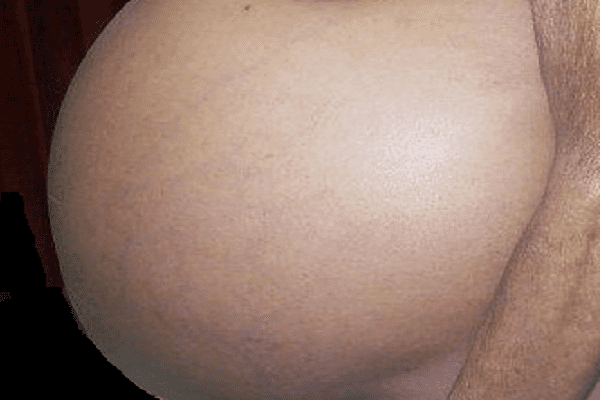Digestive system >>>> Ascites
Ascites.

Ascites (dropsy of the abdomen, abdominal dropsy) is a functional disorder in which fluid (transudate) accumulates in the abdominal cavity. The mechanism of fluid accumulation in the peritoneum is associated with an increase in pressure in the venous system of the portal vein (portal hypertension) when it overflows with blood, as a result of which, through the effusion through the walls of blood vessels, blood plasma enters the free space of the abdominal cavity.
The causes of ascites are diverse and related:
- with congestion in the pulmonary circulation (with heart failure, pulmonary hypertension, edema);
- with portal vein thrombosis;
- with kidney disease accompanied by nephrotic syndrome (glomerulonephritis, amylodosis);
- with disorders of the outflow of lymph through the thoracic lymphatic duct;
- with neoplasms of the abdominal region;
- with intrahepatic portal hypertension (with liver cirrhosis).
Signs of ascites:
- Gradually (over several months), as fluid accumulates, the abdomen begins to increase in size;
- Bloating may be accompanied by symptoms of flatulence;
- The appearance of edema on the lower extremities is possible;
- Expansion of the saphenous veins around the navel and on the sides of the trunk is possible.

Diagnosis of ascites is carried out by analyzing the sounds when tapping (dull sound), using ultrasound and computed tomography of the abdominal organs. At the same time, laboratory tests of blood, urine, and abdominal fluid are carried out.
Treatment of ascites involves drug therapy and nutritional adjustments. Medicines, along with drugs for the treatment of the disease that caused ascites, includes the use of diuretics - potassium-sparing diuretics (aldosterone antagonists) under the control of sodium and potassium levels in the blood.
The volume of liquid drunk, the volume of excreted urine is also controlled and a salt-free diet is followed. The volume of the abdomen is measured every 2-3 days. If the volume of the abdomen does not increase, then therapy with diuretics is considered successful, otherwise they rely on paracentesis of the abdominal cavity (peritoneal puncture), in which the abdominal cavity is drained and the transudate removed. The peritoneum is punctured under local anesthesia in a sitting position. The fluid is slowly pumped out to prevent a sudden drop in pressure inside the abdominal cavity. The procedure can be extended in time up to a day with interruptions.

Read

Read



























